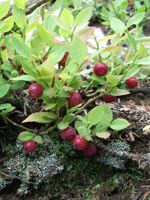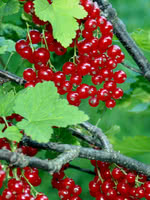Mon-Fri 9am - 5pm Mountain time
Northern Red Currant vs Grouseberry
Vaccinium scoparium
Ribes triste
CUSTOM GROW
NOT AVAILABLE THIS SEASON - MIGHT RETURN
Grouseberry is a native, low-growing deciduous shrub known for its edible red berries. In early summer, it produces small, urn-shaped flowers ranging from white to pink that attract bees and other pollinators. The berries provide an important food source for many types of wildlife, including game birds such as grouse, which gives the plant its common name. People can also enjoy the berries fresh or in baked goods, though they can be difficult to harvest in large quantities.
Spreading by rhizomes, Grouseberry forms dense, broom-like mats that help stabilize soil and prevent erosion, while also providing cover for ground-nesting wildlife. It is commonly found beneath conifers in open forests, subalpine meadows, and occasionally on rocky slopes in mountainous regions. It is well-suited for naturalization, ecological restoration, and soil stabilization projects.
The Northern Red Currant is also known as the Swamp Red currant due to its preference for moist soil. As long as the soil is wet, this shrub can live in any degree of sunlight.
The currant itself is a bright red-purple berry enjoyed by many animals and some people for its sour flavour, similar to garden red currants. The flowers of this shrub are tiny and red or greenish-purple.

